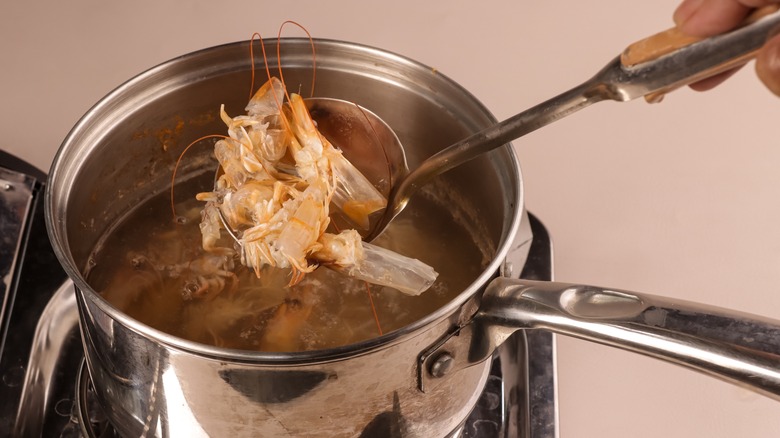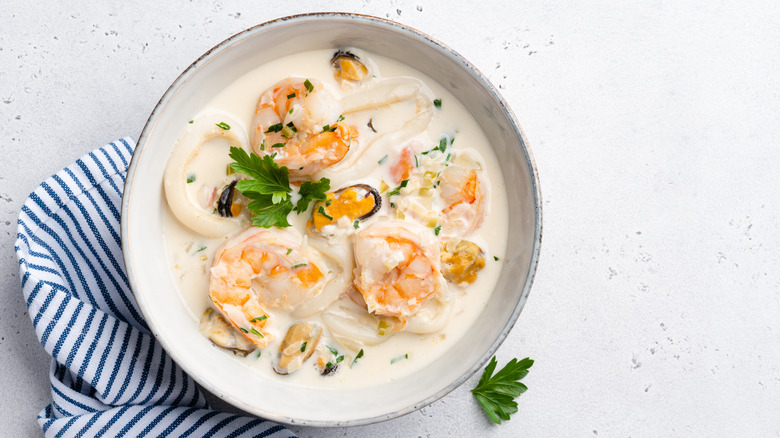Stop Throwing Away Shrimp Shells And Create A Flavorful Stock
Are you the type of person who likes to avoid as much food waste as possible in your kitchen? If so, it's time to stop tossing out those shrimp shells and tails, and start using them to create a flavorful stock. Making shrimp broth not only reduces waste and saves you money, it's also a great way to make sure you have shellfish stock on hand when you need it, because fish broth in general is notoriously hard to find at the store. So consider this your cue to start collecting your shrimp shells and tails in a resealable bag in the freezer until you're ready to use them.
In my own kitchen, I've been making bone broth from poultry, beef, and pork for more than a decade, but I'll be the first to admit that I've been sleeping on homemade seafood stock. However, after a recent expedition into the San Francisco Bay to catch some Dungeness crab ahead of the commercial season, I decided to tackle making my own shellfish stock, including using leftover shrimp shells and tails stored in my freezer. And I'm so glad I did, because it's almost as easy as making homemade chicken stock. Unlike with chicken stock, though, your kitchen will smell like fish. Before you start cooking, close all the doors to your kitchen (if you can) to prevent the smell from seeping into the rest of your house. Alternatively, you can use spices to remove the fish smell after cooking.
How to make and use homemade shrimp stock
Once you're ready to get cooking, you'll want about a gallon-sized bag of shrimp shells and tails, along with any aromatic veggies you want to use like onions, carrots, celery, or leeks. Again, keep a resealable bag in the freezer and fill it up with scraps from any meals you make — this applies for your shellfish leftovers, plus any veggie discards you might not otherwise eat (like onion or carrot peels, and celery or leek roots). Throw everything in a big stockpot, add water to cover, and simmer for at least an hour. Note that shellfish stock tends to create quite a bit of foam, so you'll want to keep an eye on it and skim as needed. For an even richer stock, you can roast the shrimp shells before simmering, but it's not necessary.
When the stock ready, strain it into jars. You can then store the tightly sealed jars in the fridge for up to three days or in the freezer for up to six months — or (even better) use it right away. Shellfish stock has loads of delicious applications, including almost any recipe that calls for fish stock or clam juice like creamy New England clam chowder or classic French bouillabaisse. It's also a great way to make a more flavorful seafood risotto or whip up some fresh and vibrant coconut fish curry.

